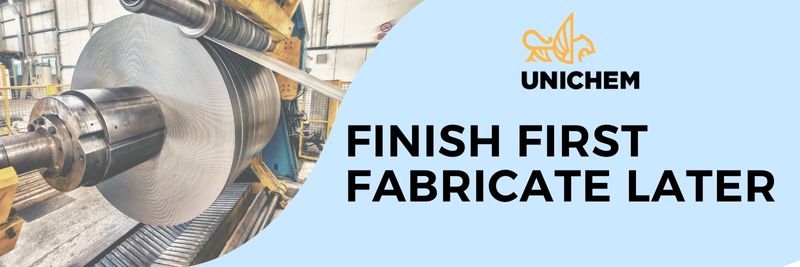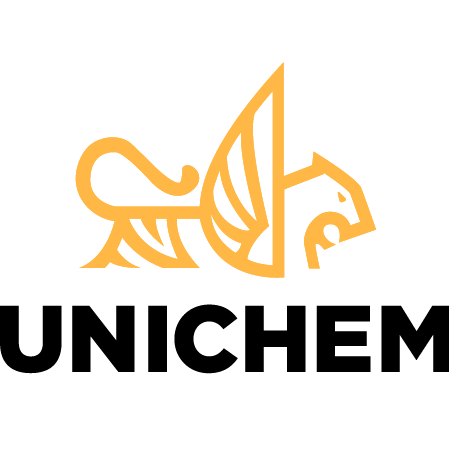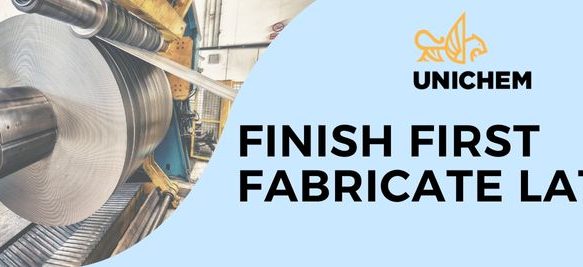
Coil coating metal sheets prior to product fabrication provides many benefits with improved product quality and process efficiencies for manufacturers. Some metal substrates must be pretreated prior to application of adhesives or coatings through the coil coating method. Pretreating metal substrates can be done with a heat treating process, electrolysis, or application of a chemical cleaner that strips the metal of contamination.
Pretreating may include more than one stage, such as a chemical clean with an abrasive brush to remove impurities or corrosion, followed by a heat treating process that alters the surface energy to allow for better adhesion without altering the product physically. Pretreating ensures that the surface of the metal coil does not contain any impurities such as particles, oil, dirt, or grease.
Pretreating Different Types of Steel for Coil Coating
- Steel substrates with the zinc coating are typically pretreated with an alkaline cleaner which efficiently removes organic contaminants and soils.
- Aluminum substrates are commonly pretreated with an alkali or acidic cleaning solution.
- Aluminum processing lines occasionally use an electrolytic method of cleaning and pretreating the surface.
Pretreating the metallic substrate improves the compatibility between the substrate and any organic coating, which improves the adhesion. Removing all impurities or contaminants with the proper pretreatment method prior to the coil coating application also provides better resistance to corrosion.
Application of pretreatment solutions can be applied by immersing the substrate in the liquid, spraying, or rolling on with the chemical coater. Some chem coaters treat both sides of the substrate with rollers on both the top and the bottom. Precise application can be controlled by controlling the speed of the rollers.
Coil Coating Application of Paints and Coatings
Following the metal coil pretreatment process, the painting process typically includes two stages, application of a primer and application of the finish coat. There are a few different types of coil coating lines, a single coater with an oven or lines with two or more coaters which are called tandem lines. Single coating lines provide cost savings over operating two or more lines, although are used in somewhat of a limited market for products such as small appliances, hot water heaters, curtain rods, and other products.
Tandem coil coating lines predominantly serve the appliance and construction markets and have the ability to apply a primer and a finish coat in a single pass. Some coil coating lines have three coaters with three ovens and serve specialized markets like construction components that require the application of a primer, a barrier coat, and a topcoat. This produces a high-quality product with high resistance to corrosion and is used in many environments that require high resistance to weather elements.
Coil coaters are highly automated and coat one or both sides of flat metal sheets with extreme precision to control the thickness of the coating material consistently. Coil coating machines can apply various formulations, but they must have good flow properties and adhesion. It is also necessary for proper wetting of the rolls to have low surface tension. Coil coating machines are equipped with a pan, a ceramic or steel pickup roll, and a rubber-covered coating roll.
Producing prepainted metal with the coil coating process provides many benefits over manufacturer in-house paint lines with a uniform application of the coating or adhesive, which provides better coverage and better protection on the steel substrate for improved quality in the end product. Learn how to improve your paint process, whether troubleshooting a current coil coating application or considering moving your in-house paint line to a coil coater by speaking with an experienced custom coating provider like Universal Chemicals & Coatings, Inc., UNICHEM.
UNICHEM is an industry-leading custom chemical and coating provider with more than 50 years of experience. We can help you realize the benefits of coil coating and offer assistance in determining the best adhesive or finish coat for your process. Contact us to learn more about the benefits of coil coating and to ensure you are using the best coating for your application.


